Islamic
The Hajj: benefits of Hajj in Islam

What is Hajj?
One of Islam’s five pillars, the Hajj, is regarded as one of Muslims’ most significant religious responsibilities. Every capable Muslim who has the means to do so must make the Hajj to the holy city of Mecca in Saudi Arabia at least once. Here we will discuss the benefits of Hajj in Islam. The Hajj is a set of rituals honouring the life and sacrifices of Prophet Ibrahim (Abraham) and his family. It takes place during the Islamic month of Dhu al-Hijjah. In addition to being a spiritual pilgrimage, the Hajj offers Muslims the chance to interact with other believers from all over the world, regardless of their race or ethnicity.
Millions of Muslims go on unforgettable Hajjs, known as the Islamic pilgrimage to Mecca. It is a highly spiritual experience that promotes unity and spiritual development. Let’s examine the significance of Hajj and how it affects those who perform this extraordinary pilgrimage in their lives.
What is the significance of Hajj in Islam?
This part will examine the background and significance of the Hajj in Islam. A long history of Hajj may be linked back to Prophet Abraham and his son, Prophet Ishmael. The Hajj rites serve to remember these beloved prophets. Each ceremony, from the devil’s symbolic stoning to the circumambulation of the Kaaba, has profound historical and religious importance. Prophet Ibrahim (Abraham), who was given the order by Allah to erect the Kaaba in Mecca as a worship site, is credited with founding the Hajj. The significance of the Hajj is found in its spiritual and social components, in addition to its historical relevance. Muslims should unite, settle their disagreements, and concentrate on their relationship with Allah during this time.
What are the spiritual benefits of Hajj in Islam?

The Hajj has spiritual advantages and historical significance for Muslims who complete it with dedication and commitment. In this part, we shall examine the spiritual significance of the Hajj in Islam and how it affects the lives of millions of Muslims each year.
The Hajj is a journey of self-examination, confession, and spiritual renewal. Pilgrims cut off all outside distractions and concentrate only on their relationship with Allah. Pilgrims work to achieve spiritual purity by engaging in acts of devotion like prayer, fasting, and supplication.
Equality and Unity Benefits of Hajj in Islam.
During the Hajj, travellers from various origins and cultures unite as equals while donning Ihrams, plain white clothes. This standard attire eliminates distinctions based on financial class, social standing, and nationality, emphasising Islam’s core value of equality. A powerful testimonial to the tenacity of religion and Islam’s universality is the unity among millions of Muslims.
Each pilgrim participating in Hajj dons an Ihram, an essential white clothing for equality and purity. This dress code removes any obvious distinctions between individuals based on their means or choice of attire. Additionally, to further emphasise their sense of solidarity and oneness, all pilgrims carry out identical ceremonies simultaneously.
For Muslims, the Hajj reminds them that equality and togetherness should be cherished during this holy pilgrimage and in their daily lives. It supports the notion that everyone is treated equally before Allah and that Islam forbids discrimination based on race or socioeconomic standing.

The Kaaba: What is The Kabba in Islam, and why is the kaaba important?
Kaaba is a religious structure located in the heart of Mecca, Saudi Arabia’s Great Mosque. The Kaaba is considered the holiest location in Islam and is very important to Muslims worldwide. The Kaaba’s history extends back to ancient times, and its beginnings are buried in secrecy and tradition. Regardless, its significance as a religious symbol has remained consistent throughout history.
The Kaaba, Islam’s holiest sanctuary, is located at the centre of the Hajj. Muslims pray in that direction because they consider it Allah’s home. When you first see the Kaaba, you are filled with awe, humility, and reverence. Tawaf, or making the full circle around the Kaaba, is a profoundly spiritual act representing the Muslim Ummah’s commitment and solidarity.
Hajj is an opportunity to transform yourself into a good Human being.
Hajj is a life-changing adventure that teaches self-discipline, patience, and selflessness. It tests pilgrims’ physical endurance and challenges them to transcend personal limitations. The rigours of Hajj, such as trekking great distances and tolerating the heat and crowds, present opportunities for self-development, resilience, and humility.
Global gathering and benefits of Hajj:
Hajj is a spectacular gathering of Muslims from all around the world. Various languages, ethnicities, and backgrounds foster a unique sense of brotherhood, understanding, and common dedication. It strengthens friendships, encourages cultural interaction, and strengthens the Muslim community’s global unity.
How does Hajj impact the community and global gatherings?
Hajj, the yearly Islamic pilgrimage to Mecca, is one of the world’s most significant gatherings of people. Hajj is extremely important since it brings together millions of Muslims worldwide, regardless of race or nationality.
The Hajj has a significant impact on both the local community and the worldwide gathering. It allows Muslims to unite and unite, reinforcing their faith and deepening their relationships.
Millions of pilgrims spend money on transportation, lodging, food, and other essentials, which has a significant economic impact on Mecca and nearby areas.
Furthermore, Hajj is a platform for interfaith communication and understanding across many cultures and religions. In this way, Hajj contributes significantly to promoting peace and harmony among individuals from various origins.
Overall, Hajj is a one-of-a-kind event that has a significant impact on both individuals and society as a whole. Its history and significance make it a crucial element of Islamic heritage, bringing people together for years to come.
Do you want to test your Hajj knowledge? Here is the Hajj Quiz for you. Test Yourself.
The Hajj voyage is a transforming and meaningful journey that includes spiritual enlightenment, personal growth, and a solid connection to Islamic tradition. It is an emblem of faith, solidarity, and dedication, leaving an unforgettable impression on those undertaking this sacred trek. The Hajj experience transcends boundaries and languages, symbolising Islam’s universal message and the vital link that binds Muslims worldwide.
Islamic
When is Eid ul-Adha 2024?
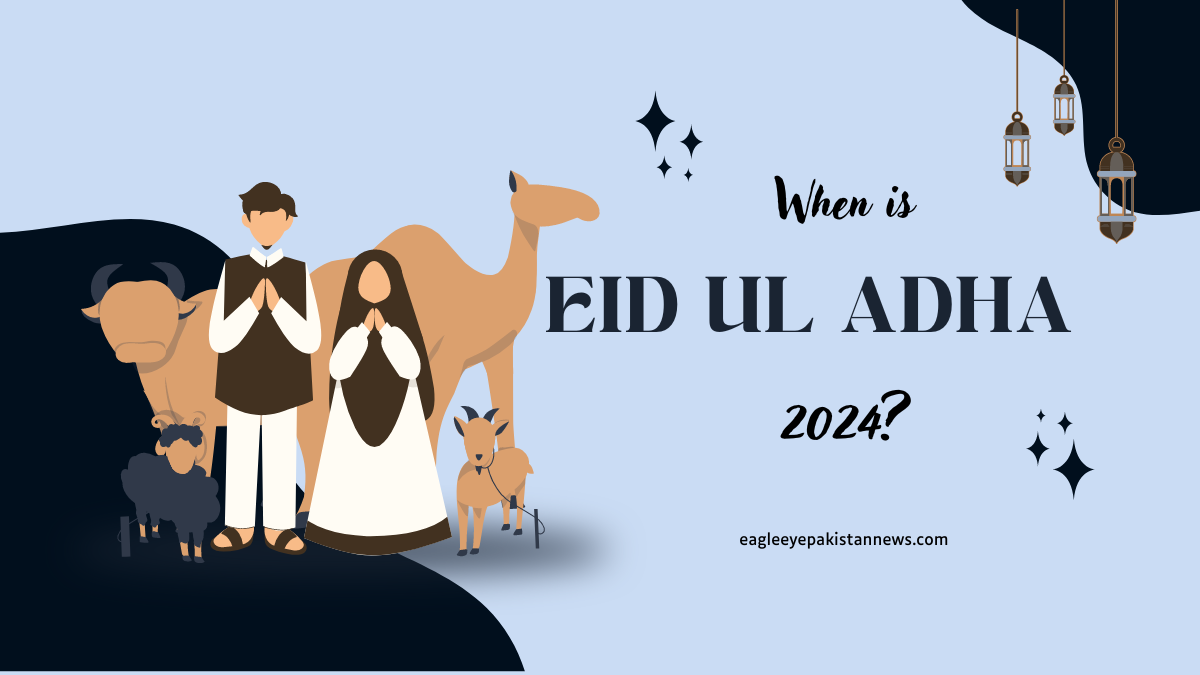
Eid ul-Adha is another Islamic holy day that is celebrated as the festival of sacrifice since Prophet Hazrat Ibrahim was prepared to sacrifice his son for God. In the Gregorian calendar, Eid ul-Adha is slated for 17 June 2024, becoming a Monday.
Use this as a reminder and get ready for the day dedicated to prayers, celebration, delicious food, and being with loved ones. Eid Mubarak!
Significance of Eid ul-Adha
Eid ul-Adha is one of the significant festivals within the Islamic calendar and is celebrated by Muslim populations in different parts of the world. The current phase also sends its message of spiritual and temporary submission, marking the end of the Muslim pilgrimage to Mecca, known as ‘Hajj.’
Muslims know well the story of Ibrahim, who is ready to sacrifice his son to please Allah, which is a call for Muslims to surrender to the will of the Almighty and trust in Him. Slaughtering an animal on this day also conveys another message that one is ready to part with wealth for the Lord.
Besides, the aspect of unity and generosity is enhanced through Eid ul-Adha as people are encouraged to share their sacrificial meat, especially with people in need. Such a charitable and compassionate action is one of the principles of Islam and is especially stressed during this crucial celebration.
Celebrating Eid ul-Adha
Eid ul-Adha is among the happiest celebrations for Muslims, irrespective of their country. The day entails special prayers in the mosques or even open grounds during the new day’s break and social interaction with family and friends.
Families also wear new clothes at the beginning of the celebration, and gifts are given, particularly to children. Food is also a significant aspect of the festival, to which emphasis is laid and local delicacies such as biryani, kebabs, and sweet dishes are prepared.
Conclusion
Eid ul-Adha is a beautiful Islamic event for them, with the essence of faith, sacrifice, and togetherness. The time to bring up the theological concepts presented in Islam, as well as a good opportunity for reunion with loved ones. Thus, having forecast the coming Eid ul-Adha in 2024, people should always focus on the real meaning of this event and try to stick to these principles. Eid Mubarak!
In general, I liked the representation of Eid ul-Adha as a beautiful lesson for Muslims and a call to be always thankful for everything, no matter how perfect it might seem. I wish all of you a pleasant family day. May this day be joyful and memorable for all of you.
Islamic
Why is the Kaaba Significant?: Revealing its Spiritual Importance
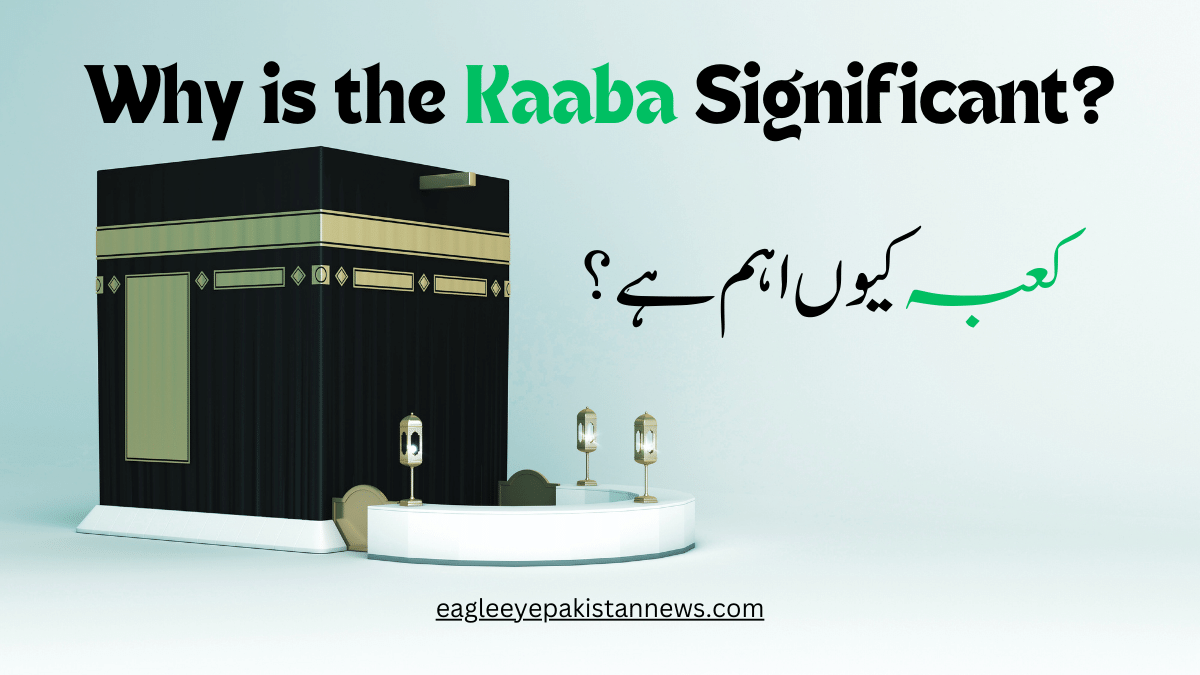
Kabba is a famous shrine in the heart of the Great Mosque in Mecca. It is of paramount religious importance to several million Muslims around the globe—this cubic-shaped structure with gold Arabic calligraphy draped in black signals royalty and devotion. Now, there may be an obvious question of Why is the Kaaba Significant.
For thousands of years, the importance of the Kaaba goes back to the Prophets Ibrahim (Abraham) and Ismail (Ishmael), who were said to constructed the Kaaba. Muslims also believe that it is the House of God and the most sacred land according to their religion. Every Muslim prays in the East, whichever part of the World they are in. Al Kaaba also represents a centre and acts as a centre of attraction where all Muslims from all walks of life may be united by the thought that the Kaaba is all that they have, and that is their reason for existence.
Apart from being a holy building associated with the Islamic religion, the Kaaba has other unusual features that intrigue visitors. There are many legends and stories surrounding this sacred symbol, which adds to this ancient place’s mystique. How millions of pilgrims perform Tawaf around the Kaaba to fulfil Allah’s command is a manifestation of human submission to the Will of Almighty God.
The significance of the Kaaba goes beyond the actual site, whether scientific or historical, but also the belief and the way it unites millions of people in their commitment to it. It is an example of the effects of faith and the survival of Islam as an element of the religion being lived out daily.
Historical Background of the Kaaba
Why is the Kaaba Significant? The answer is that the history of the Kaaba is long and goes on for centuries. It was constructed assuming that the Prophet Ibrahim and Prophet Ismail built it as a house of prayer for God in the Islamic tradition. The source of the story is that Prophet Ibrahim was inspired by God’s need for a home in a particular place in the city of Mecca. They engage Prophet Ismail to help them build the Kaaba using stones from the mountains surrounding Makkah. This expression of reverence and submission to God made the Kaaba to be a holy place for Muslims.
According to history, the Kaaba has been remodelled and expanded several times. This is because various rulers and dynasties have been responsible for its upkeep. Significant remodelling work was done when the Prophet Mohammed came; this was when all the idols were to be removed from the Kaaba and shifted towards worshipping one God. Since then, the Kaaba has been the source of great Islamic faith, with people from around the World going on pilgrimage there.
Pilgrimage to the Kaaba – Hajj and Umrah
The trip to the holy city and the arrangements at the Kaaba are embracers for Muslims. The Hajj is the supreme devotional obligation, and every adult Muslim who is physically and financially able is required to undertake it. It is a process of religious devotion, prayer, spiritual restoration, spiritual growth, and seeking atonement from God. The Hajj: the pilgrimage activity comprises several performing activities that take a few days, the Tawaf (circumambulating the Ka’aba), Sa’i (running between the hills of Safa and Marwa), as well as the standing in Mount Arafat.
Besides, the Hajj trip offers Umrah as a pilgrimage for Muslims, which can be performed all year. Nevertheless, the Umrah has rituals similar to the Hajj but of a lesser magnitude. Those who do Umrah as a non-obligatory ritual often do it as a form of spiritual pilgrimage, just as Hajj or as a prelude to Hajj. They both include a religious journey where Muslims are in touch with their faith and about feeling close to God and the feeling of unity and ummah because of the Kaaba. This is another reason why Kaaba is significant.
Symbolism and Spiritual Importance of the Kaaba
Many Muslims believe that the Kaaba is the most sacred place and has significant symbolic meaning. Its three-dimensional design symbolizes three aspects of one God to reflect Islam’s belief that God is monotheistic. Going through circumambulation in the performance of the Hajj and Umrah shows the eternal journey to achieve God’s reward and draw closer to Him.
Another significance of the black cloth that covers the Kaaba – kiswah – is the role of domination over God. It provides a confirmation that, as such, there are no boundaries in front of the Divine being, and all the exalted worldly possessions cease to exist.
The Kaaba also serves as a reference point for the conception of the QiblaQibla. The direction set for the Muslims during their prayers is the Kaaba, symbolically attaching themselves to the location in both orientation and devotion. This act depicts the Oneness of Muslims as members of the community all physically align themselves to a centre but from different places.
Prominent Abrahamic Religion Figures and Mysteries surrounding the Kaaba
There are many myths and legends associated with Kaaba and related to its inner secrets over the centuries. One such legend is the story of the Black Stone, which is perfectly placed in one corner of Kaaba. It states that the Black Stone is believed to have emanated from heaven and had once been white but turned black as a result of the wickedness of people. Muslims also believe that the black stone possesses powerful virtues that can remit sins and shower blessings upon the worshiper.
One more thing of the Kaaba is the nearby Zamzam Well that evades explanation. It is said that it is a holy source of water that relieved Hazrat Ismail and his mother, Hazrat Hajra (Hagar), from thirst after they spent ten days wandering in the desert. Zamzam is regarded as the holy water that pilgrims and visitors to the Kaaba should drink.
These legends and mysteries contribute to the mystic and religious importance of the Kaaba in further fragmenting the belief in the divine origin of the place and the miracles of its environment.
The Kaaba in Islamic Architecture and Design
The distinctive architectural design of the Kaaba has influenced Islamic architecture and design over the past decades. The geometric shape of a cube, its simplicity, and the everyday use of geometric patterns have allowed many mosques in Islamic architecture in various nations all over the World to refer to such a geometric scheme. The Kaaba features prominently in the shape of the mihrab niches or prayer niches in their buildings, domes, minarets, and others.
In addition, the Kaaba plays a vital role in the design of mosques – the mosques are often oriented in relation to the Kaaba. A mosque’s religious axis is an important feature of the design as it points towards Mecca. Muslims stand in parallel lines throughout the room in the direction of the qibla wall, which points towards Kaabah, Mecca. This architectural element highlights the importance of individual worship and its connection to the overarching Islamic religious community and that such connection is also democratic and thus equalizes individuals.
Debates About the Kaaba
Arguably the holiest of places in Islam, the Kaaba has had its fair share of debates. A few critics have said that there is a touch of idolatry in visiting the Kaaba because of the physical moving around the Kaaba and the rubbing or kissing between Kaaba’s black stone. They believe that an emphasis on material objects and structures distracts the worship of Muslims from the worship of God. But Muslim’s point of view is different. They consider it the Home of Allah and only the point of Direction towards Muslims pray five times a day. Muslims don’t worship the Kabba or Black Stone but Allah.
Some other scholars have also raised questions pertaining to the possessors and administrators of the Kaaba. This picture is also true throughout history when various Muslim dynasties and rulers in different periods strived to claim for themselves the right to rule the Kaaba and its vicinity.
Nevertheless, most Muslims consider this religious edifice the symbol of unity, devotion, and otherworldly significance. It does not make any difference whether this book convinces or not, but it still keeps inspiring millions of believers.
Conclusion: The enduring significance of the Kaaba
It would not be an exaggeration to say that the Kaaba is considered to be the spiritual centre of millions of Muslims all over the World. This shows that it is a very significant place in the region in terms of historical, religious, and even spiritual aspects. Located in the Holy Shrine and used for directing prayer for Muslims, the Kaaba represents unity and faithfulness and also represents the concept of Oneness among the Godly beings. Rituals done in Hajj and Umrah, as well as myths and speculations about the Kaaba and its correlation with Islamic architecture, make for this.
The Hajj and Umrah become quite culturally significant because of the rituals related to the Ka’bah, the myths and legends surrounding it, and Islamic architecture.
It reminds them of their humanity through their shared faith and their drive, along with their ability to be devoted to God. It is an indication of the self-sustaining and timeless power of Islam in the followers’ lives; they have found personal and national unity in Islam that cuts across the different boundaries between populations and states. Be it the mysterious force that the Kaaba exerts that drives millions of Muslims flocking every year to experience it and reinforce their faith every year. Hopefully now you know why the Kaaba is Significant for Muslims around the globe.
Islamic
Red Heifer Meaning: Ritual, Purity, and Jewish Law Explained
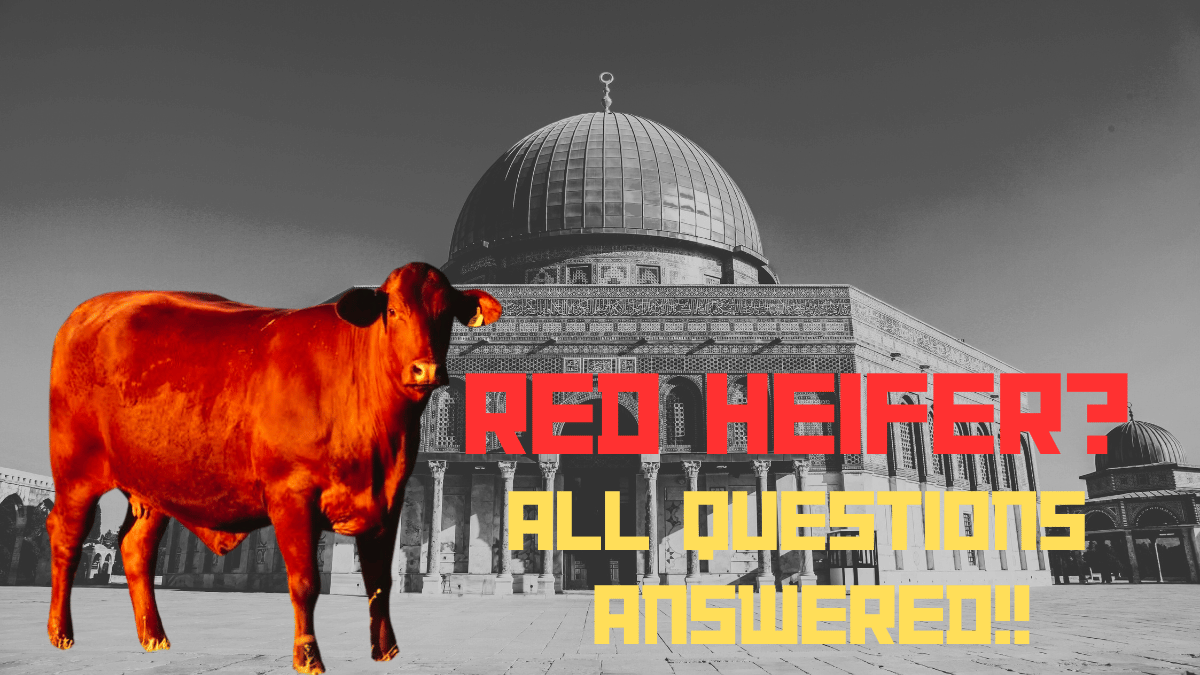
Have you heard of a religious cow? The Hebrew Bible mentions the rare red heifer, a blemish-free female bovine. The peculiar animal is an integral part of the cleansing ceremony in Jewish tradition.
What is a red heifer and why is it important? We’ll explore the red heifer’s meaning, purity requirements, and role in Jewish law. Discover the mystery of this unusual biblical animal!
Can you tell me what a red Hifer is?
According to the Hebrew Bible (Numbers 19), a red calf is a unique female cow that is completely red and has never given birth, milked, or worked.
How does the Jewish faith interpret the symbolism of the red heifer?
The answer is that there was a specific ritual for cleansing oneself after touching a corpse that involved the dust of a red calf. Taking part in this particular religious ceremony is very important.
How can one tell if a red heifer is pure?
The Bible specifies that the red calf should be:
Red, devoid of any other hues.
There is no history of pregnancy, milking, or employment.
In the annals of time, how many red calves are born?
The precise figure is unknown, although it is quite unusual. Although it is extremely difficult to achieve the purity standards, there have been documented instances of probable red calves.
How does one go about slaughtering a red calf according to Jewish law?
Numbers 19 explains the process of sacrifice.
An officiant removes the calf from the camp and slaughters it.
The calf is roasted to death using cedar wood, a certain herb (ezov), and scarlet wool.
Store dust effectively in a designated spot, ensuring a clean and organized space.”
On the third and seventh days of the cleaning process, a person sprinkles water mixed with the dust on oneself to be clean.
Please read our detailed article to learn more about this rare sacred red cow and red heifer.
As a bonus fact, the significance of the red calf extends beyond just the cleansing ritual. For some, it heralds a new beginning spiritually or the return of the Messiah.
-

 Quiz1 year ago
Quiz1 year agoHajj Quiz? What do you know about Hajj?
-
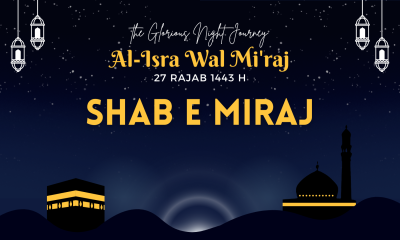
 Islamic1 year ago
Islamic1 year agoShab E Miraj In The Light Of Quran: The Night Of Miraj
-

 Pakistan News1 year ago
Pakistan News1 year agoSouth Asia’s longest zipline in Kaghan.
-

 Health and Fitness1 year ago
Health and Fitness1 year agoHow to get clear skin naturally at home?
-

 Cricket1 year ago
Cricket1 year agoFans in Pindi Stadium were loud as they witnessed Fakhar Zaman’s special.
-

 Health and Fitness1 year ago
Health and Fitness1 year agoHow to stay cool during the heatwave?: Top tips to stay Cool
-

 Health and Fitness1 year ago
Health and Fitness1 year ago3 Simple Tips for Weight Loss at Home
-

 Entertainment1 year ago
Entertainment1 year agoUmro Ayyar Teaser -Stellar Cast and Budget Revealed!


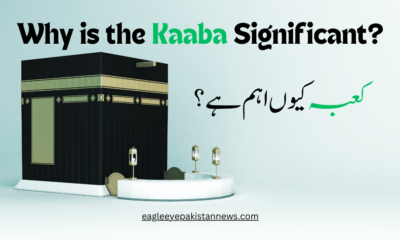

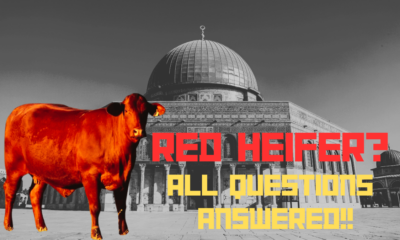

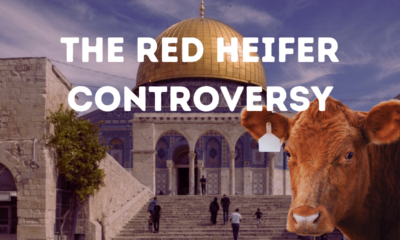



Pingback: Hajj Quiz? What do you know about Hajj? - Eagle Eye Pakistan News
Pingback: Ramadan Fasting and Mental Health - Eagle Eye Pakistan News
Pingback: Why is the Kaaba Significant?: Revealing its Spiritual Importance
Pingback: When is Eid ul-Adha 2024? - Eagle Eye Pakistan News